You’ve started your cold email campaigns but they’re not performing as they should?
Check out these tried-and-tested cold email tips and solve your issues.
⚠️Take it step by step, spend some time on every tip in this checklist for the best results.
Research & Targeting
#1 Define your ideal customer profile (ICP)
Why?
It ensures you target the right people – maximizing impact & ROI.
How?
Use our free ICP generator, or start from scratch with this B2B persona guide.
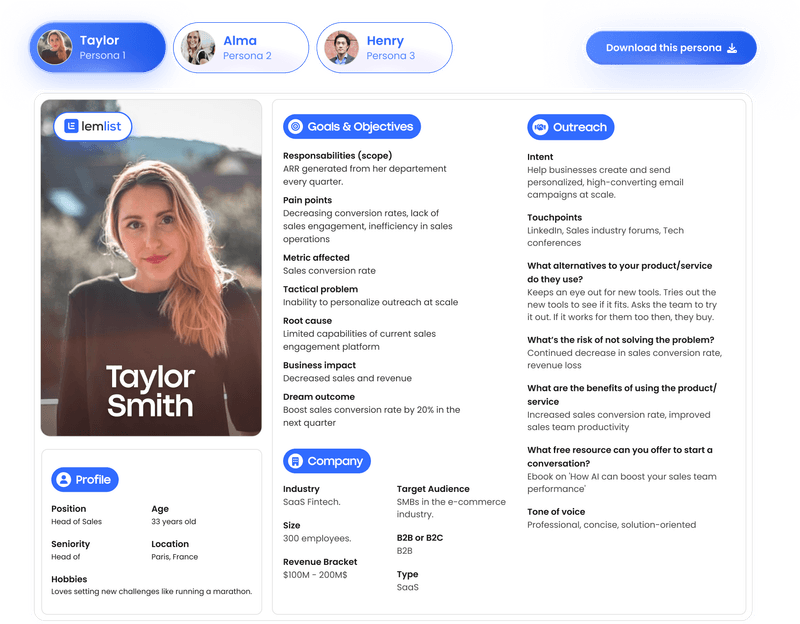
#2 Research all there is to know about your prospects

Why?
It’s the secret to pinpointing the perfect way and place to personalize your pitch with every outreach.
How?
Touch ground on…
- Who They Are (their role, company, interests, and recent achievements.)
- What’s Up in Their Industry (news, challenges, and trends.)
- Their Problems & Needs (pain points and desires.)
- Past Interactions (conversations or engagements you had with them.)
- Social Media Activity.
- Shared networks or contacts.
- Company Goals (ongoing projects or initiatives.)
#3 Segment your email list
Why?
Segmenting your lead lists sharpens your marketing focus, ensuring tailored, relevant messaging that resonates and converts.
Segmented emails drive 30% more opens and 50% more click-throughs than unsegmented ones.
– Hubspot
How?
After you find their email addresses, break them up into sub-lists.
You can use criteria like demographics, professional roles and previous engagements.
Or you can segment them into value-tiers (least to most revenue potential) based on past sales trends.
Use this G-Sheet addon to get clean, enriched and segmented email lists.
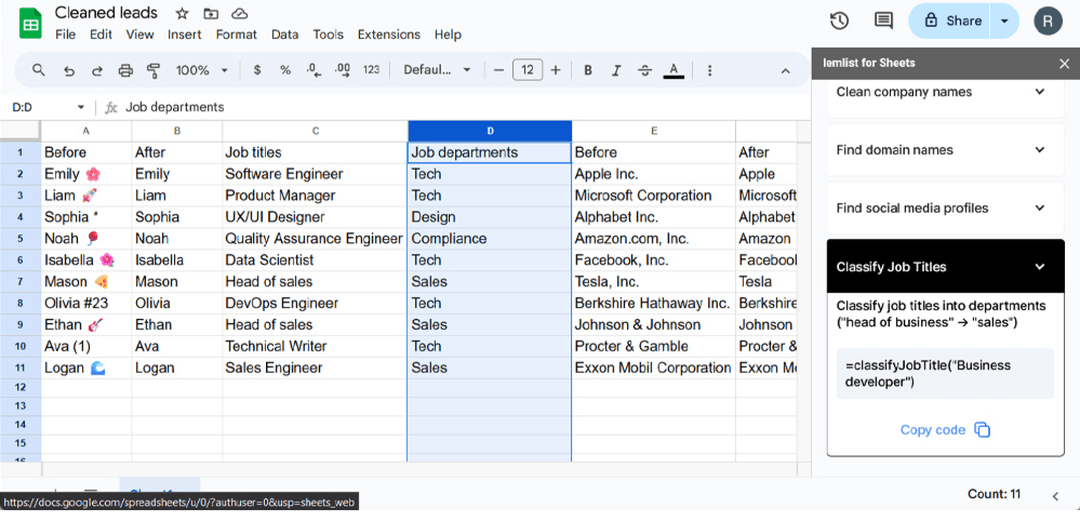
Alternatively, segment your list automatically using lemlist’s new AI Variables feature. It could save you hours of manual work.
Say you have a set of leads, and you want to segment all leads that work for SaaS companies, you can use the following prompt:
Based on the following company description, determine if the company is very likely a Software as a Service (SaaS) company. Output ‘True’ if it is very probable that the company is a SaaS. Output ‘False’ if the company is not a SaaS. Output ‘N/A’ if the company description is empty. Input company description: {{companyDescription}} The output should always be ‘True’, ‘False’ or ‘N/A’
* This prompt assumes that there’s a column called companyDescription.
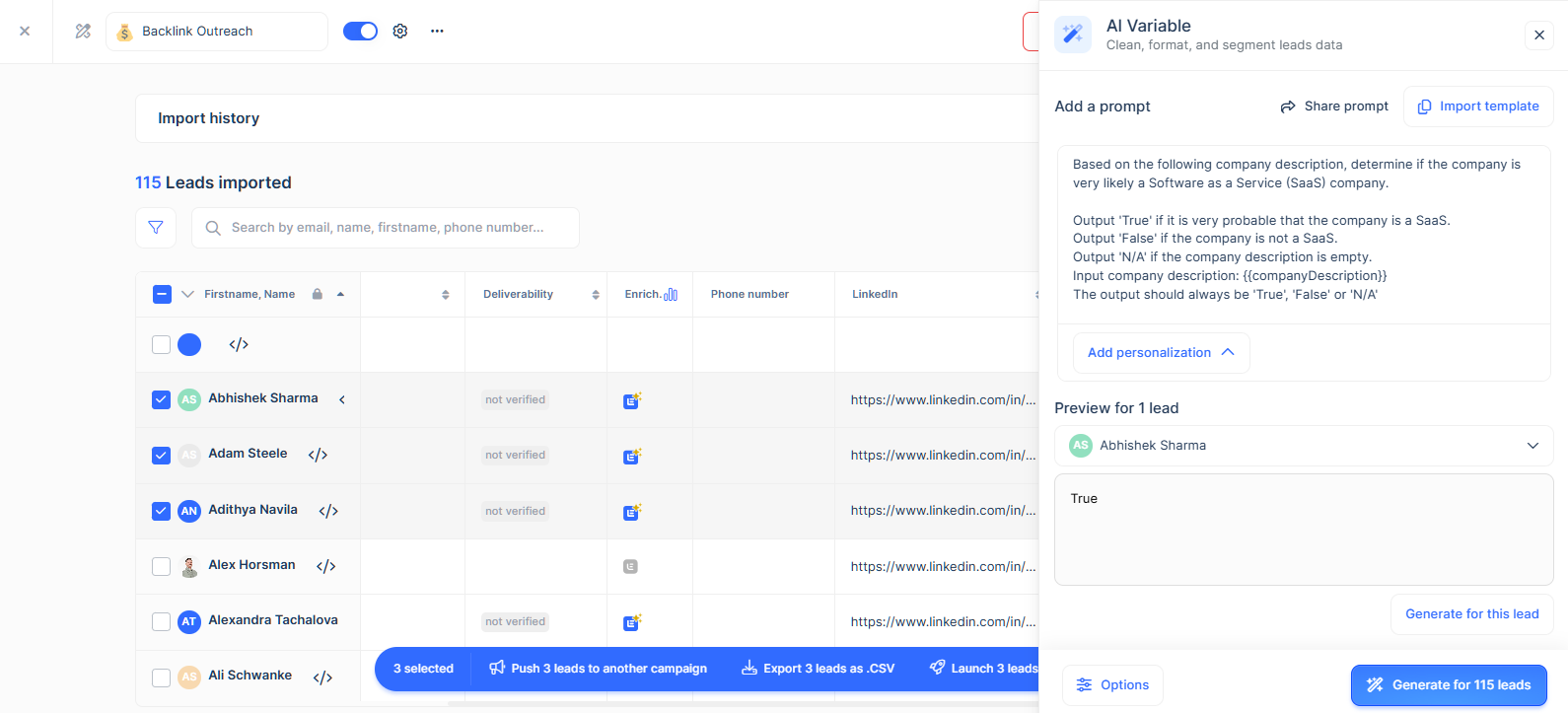
Let AI do its magic, then push the leads to a campaign aimed at SaaS companies.
#4 Verify emails before you send
Why?
This is immensely important as it will prevent bounces, thereby improving your email deliverability score!
How?
You can use a tool like Bouncer, or try a few free email verification methods to make sure you have valid addresses.

Make sure you’re getting your contact information from a reliable source, so as not to waste time going through an endless list of undeliverable emails. Check out lemlist’s +450 lead database and gather valid.
Best Cold Email Sending Practices
#5 Organize & format
Why?
Properly organized and formatted .csv files are the backbone of personalized, error-free email campaigns.
They ensure seamless contact import and targeted messaging.
How?
Clean and structure your data: Remove duplicates, standardize fields (like names and emails), and sort into clear columns.
This makes for smooth importing and effective personalization.
#6 Mind your volume
Limit it to 50-200 messages per sender daily; for larger campaigns, consider distributing emails across multiple senders.
Why?
It boosts delivery rates – ensuring your message gets through.
How?
You should aim for a natural cadence increase over time.
lemwarm can automate the trouble of gradually increasing your sending cadence, and will monitor your deliverability.
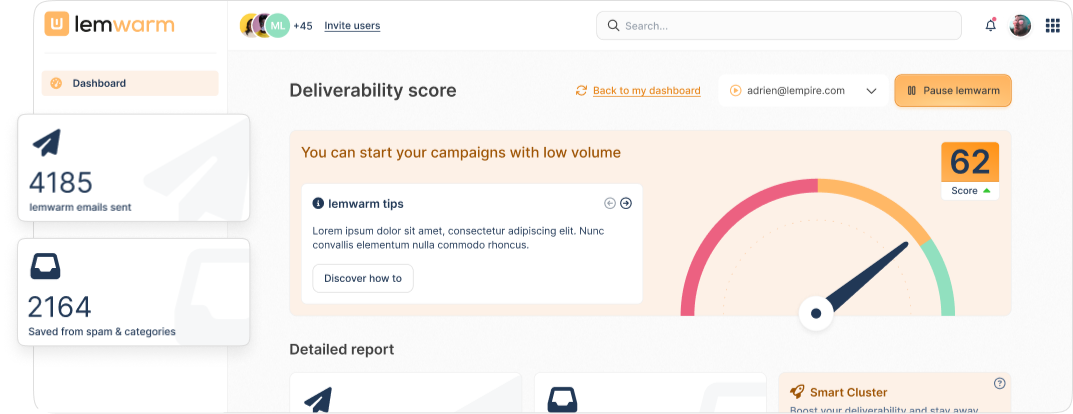
#7 Don’t send it all at once!
Why?
Sending all your emails (newsletters, cold emails etc.) can trigger rate limits that block your emails.Go with staggered sending instead.
How?
Email automation tools, like lemlist, can help you send emails sequentially, preventing bulk sends that trigger rate limits.
Technical Components & Email Deliverability
#8 Set up your SPF
Why?
SPF authentication helps prevent email spoofing, ensuring your emails are trusted and more likely to reach the inbox.
How?
Configure SPF for Google accounts and Exchange accounts by adding an SPF record to your domain’s DNS settings.
#9 Set up your DKIM
Why?
DKIM adds a digital signature to emails, verifying the sender’s identity and increasing deliverability.
How?
Implement DKIM for Google accounts and Exchange accounts by creating and configuring DKIM records in your DNS.
#10 Set up your DMARC
Why?
DMARC protects your domain from unauthorized use and improves email deliverability and security.
How?
Implement DMARC by adding a DMARC record to your DNS and configuring it according to your policy preferences.
#11 Set up a custom tracking domain
Why?
A custom tracking domain enhances brand consistency and email deliverability, reducing the risk of being marked as spam.
How?
Create and verify your custom tracking domain following the guidelines provided here, then integrate it with your email campaigns.
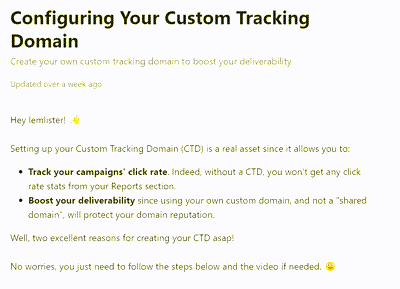
#12 Optimize your Google Profile
Why?
An optimized Google Profile ensures your emails are recognized and trusted by recipients, boosting open rates.
How?
Ensure your Google Profile has accurate and updated information, including your name, logo, and contact details, to maintain consistency and professionalism in your email communications.
#13 Use A Simple Email Signature
Why?
It can overwhelm your recipient.
How?
Steer clear of intricate HTML; opt for simple, lightweight designs.
Use lemlist’s signature generator to get the best email signature in seconds.
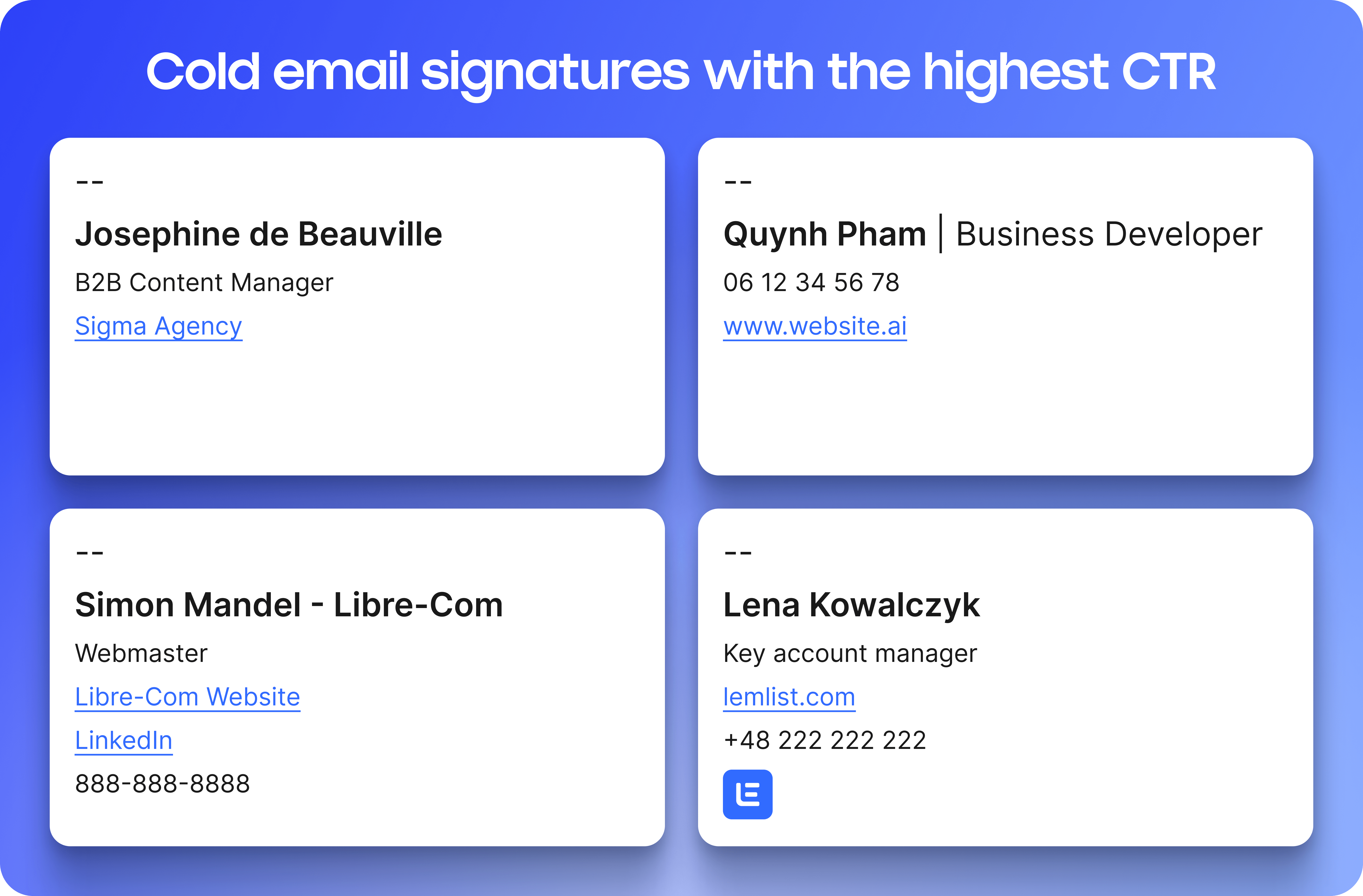
#14 Avoid attachments
Why?
It can get you flagged for spam real quick!
According to F-Secure, 85% of all malicious emails have a .DOC, .XLS, .PDF, .ZIP, or .7Z attachment.
How?
Opt for Google Drive links instead.
If you have to include attachments – limit it to one or two per email & ensure your email isn’t filled with spam words.
#15 Add an opt-out option
Why?
This isn’t a tip, it’s mandated by the law in a lot of places.
How?
For US readers, the CAN-SPAM law states that opt-out mechanisms are non-negotiable.
#16 Don’t worry too much about perfect timing
We tested this – timing doesn’t make a big difference.
Focus on write a great email instead!
Although timing may not be too much of a factor, you can slightly increase your chances of getting your reply by sending your emails on the right day.
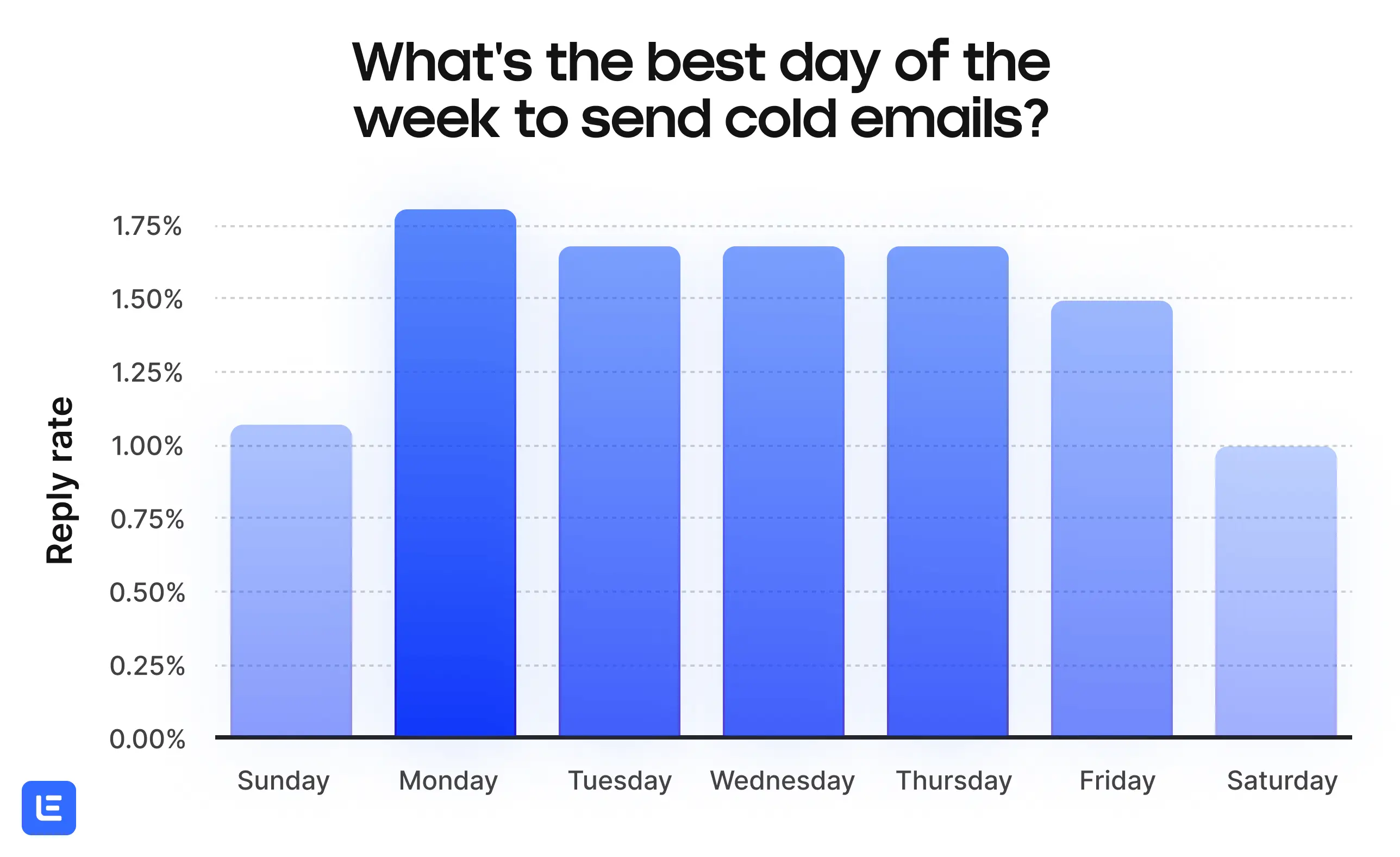
#17 Use a dedicated outreach domain
Why?
Protects your main email reputation and avoids deliverability problems.
How?
Create a secondary domain for cold emails, especially for larger sales teams.
Cold Email Personalization Tips
#18 Experiment with subject lines
Why?
Effective subject lines boost open rates.
How?
Find what works for your audience by playing with variations & track the results!
#19 Address your prospect by name
This is the starting point of every personalization tactic.
What if I don’t have their first name?
If you’re working with bigger lists and worry if some prospects don’t have the first name, lemlist has a nifty feature called the ‘fallback value’ to curb this concern.
Simply use {{variable|fallback}}. In our case it would look like this: {{firstname|lemlister}}
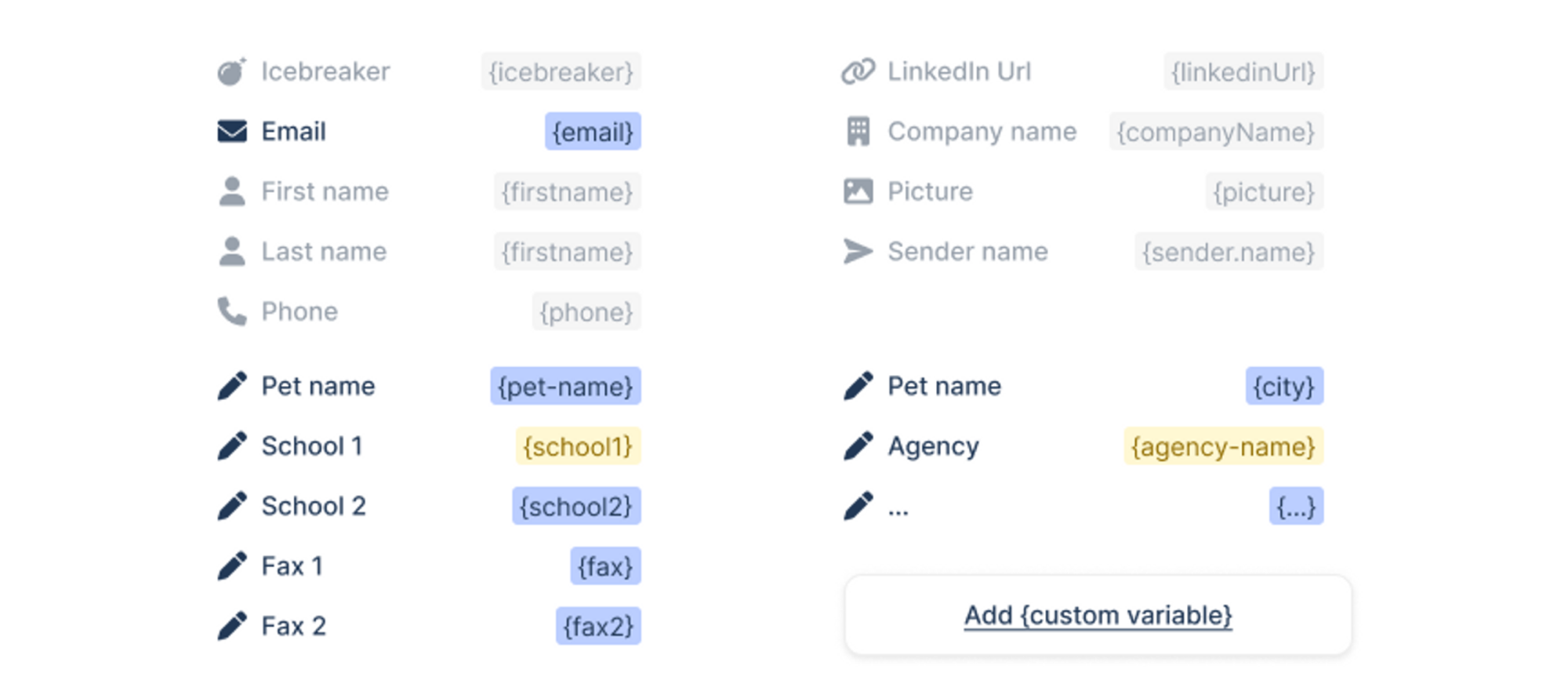
#20 Leverage Tiramisu Intro Lines
Why?
First impressions matter.
Your intro line sets the tone of your email and decides if the reader stays engaged.
How?
Focus on the prospect in your intro lines.
Avoid talking about yourself or your company initially.
Use the Tiramisu Strategy for a layered approach – check our CSV file for guidance.
#21 Delay Your Pitch

Why?
Rushing to the pitch can turn off prospects.
Start with a conversation to build rapport.
How?
Focus on establishing a connection first.
This makes pitching more natural and effective later.
#22 Use a Powerful CTA
Why?
A clear, singular call-to-action (CTA) is more effective than multiple, confusing ones.
How?
Craft one strong CTA for your email. It should be direct and easy to understand, guiding the reader to the next step without any ambiguity.
#23 Follow Up
Why?
Persistence pays off.
Many responses come from follow-up emails.
How?
If you don’t get a reply initially, don’t hesitate to send a follow-up email.
It can be the nudge that turns a prospect into a conversation.
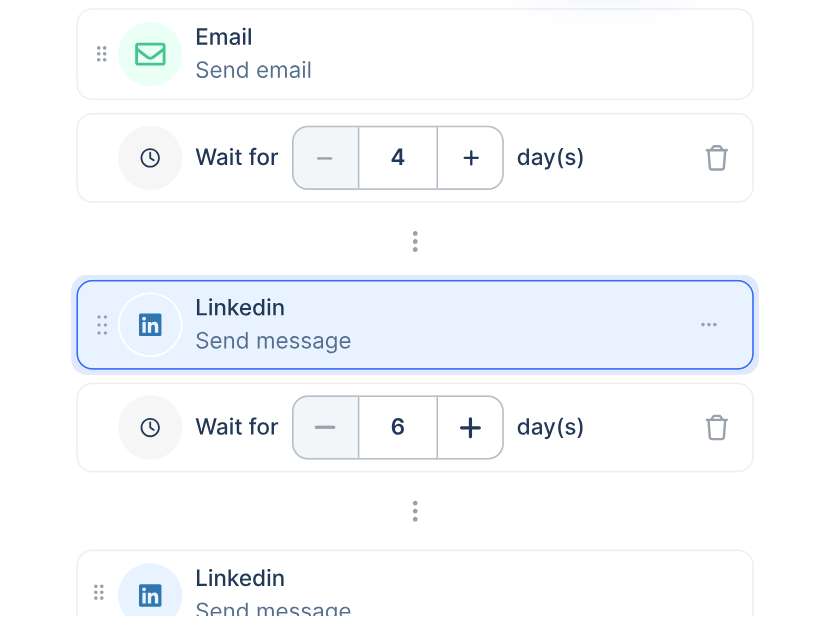
#24 A/B Test Everything!
Why?
Testing beats guessing. A/B testing reveals what truly resonates with your audience.
How?
Implement A/B testing in your campaigns. Experiment with different elements like subject lines, email body, or CTAs to understand your audience’s preferences and improve your approach based on data.

Leveraging ‘LinkedIn x Cold-email’ outreach campaigns? Check out our guide to personalize them at scale.
Cold Email KPI’s To Track
#25 Open Rate > 50%
If you’re seeing open rates over 50%, you’re doing well; your emails are getting noticed.
If not, there could be deliverability issues.
This deliverability checklist might help you identify and fix the problem.
#26 Click rate > 40%
If your click rate is hitting above 40%, you’re definitely connecting with your audience, leading them to take action.
If it’s lower, it’s time to reevaluate your content or call-to-action to make sure they’re compelling enough.
#27 Reply rate > 8%
A reply rate above 8% is a strong indicator that your emails are resonating and engaging.
If you’re falling short of this, it might be worth revising your email’s tone, content, or personalization to encourage more responses.
#28 Bounce Rate > 5%
If your bounce rate is over 5%, that’s a red flag.
It suggests issues with your email list quality or outdated contacts.
Remember to clean up your list regularly.
General Tips
#29 Don’t spam
Why?
Spam complaints damage your sender reputation and email deliverability.

How?
Focus on sending relevant, valuable content to the right audience.
Monitor engagement and unsubscribe rates to ensure your emails are well-received and never verge into spam territory.
#30 Create cold email templates
Why?
Templates streamline your email process and maintain consistency in successful communications.
How?
Identify and save your best-performing cold emails as templates.
This not only saves time but also allows you to replicate successful strategies across different campaigns.
Need inspiration, use the most cold email template hub ever created!
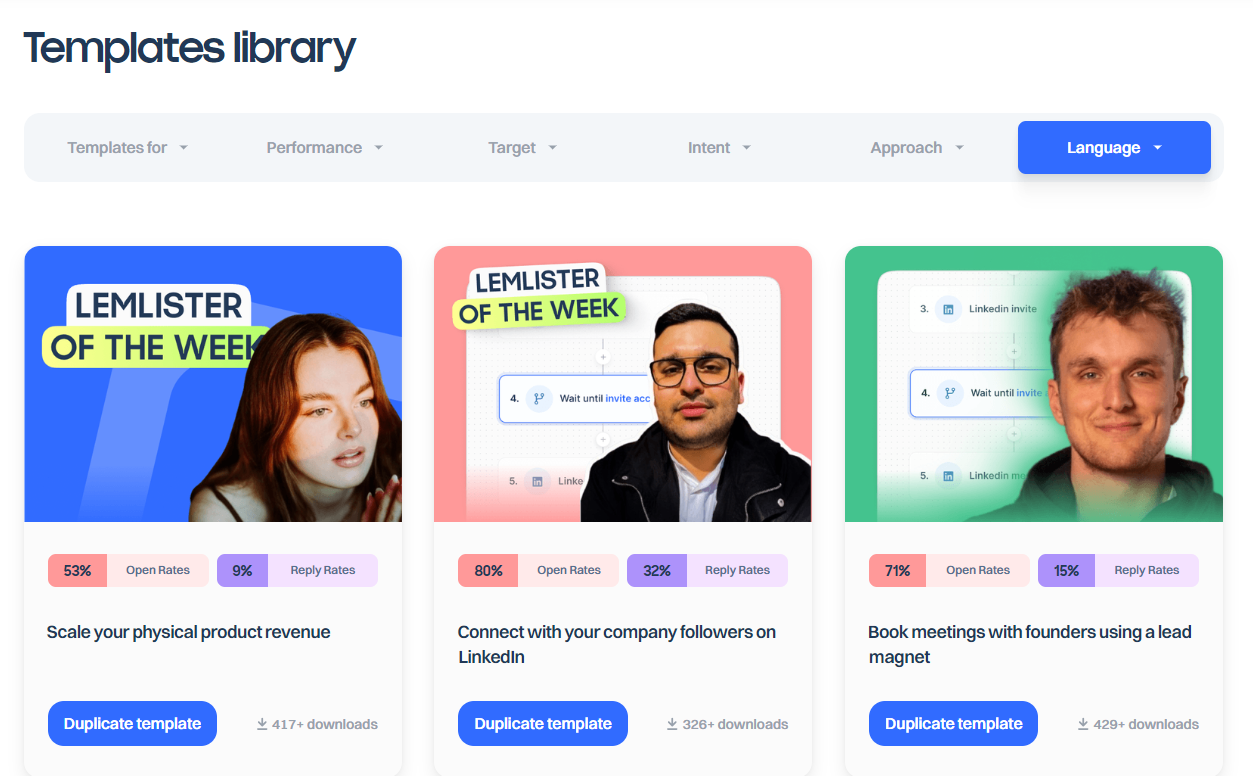
Bonus Hacks For lemlisters!
Not a lemlister?
We’d be honored to welcome you to the family!
To join:
- Sign up for a free trial (no credit card required) to play with lemlist’s powerful email features.
- Join the Outbound Hub – for genuine connections, real support, and first-hand sales knowledge!
Back to the tips…
#31 Add dynamic first names onto images
Why?
Personalizing images with the recipient’s first name dramatically increases engagement and shows attention to detail, making your emails stand out in a crowded inbox.
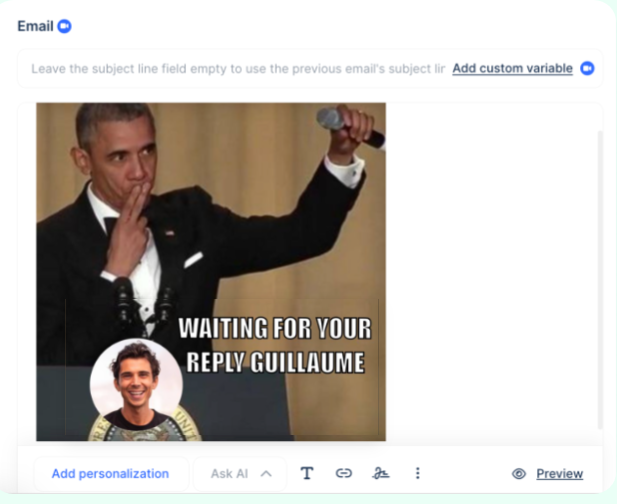
lemlist Tutorial: How to add the {{firstName}} tag onto the image
#32 Include their company logo
Why?
Using a prospect’s logo personalizes your email, boosting relevance and engagement.
lemlist Tutorial: How to add company logos to your emails
#33 Add web screenshots
Add screenshots of your prospect’s websites to hook them from the start!
lemlist Tutorial: How to add personalized website screenshots
#34 Use video thumbnails
A failproof strategy to instantly build trust & ramp up reply rates!
lemlist Tutorial: How to create a personalized video thumbnail
#35 Send unique links
Depending on your cold email strategy, you can personalize and send unique links to prospects at scale to enhance engagement.
lemlist Tutorial: How to personalize your links
#36 Leverage liquid syntax
to adjust your message to fit the context.
lemlist Tutorial: How to use liquid syntax in your cold emails
#37 Utilize spin syntax
Adapting your message with liquid syntax ensures contextually relevant and highly personalized emails (e.g. deliver 5 different types of intro lines.)
lemlist Tutorial: How to use spin syntax in your cold emails
#38 Create dynamic landing pages
Dynamic landing pages tailor the user experience, increasing relevance and conversion rates.
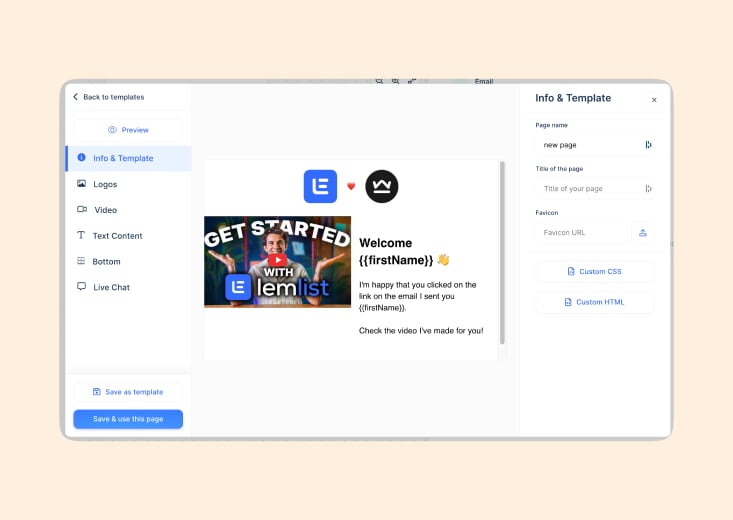
lemlist Tutorial: How to use dynamic landing pages in lemlist
#39 Review before you send!
Before you send cold emails in lemlist, you will enter the review stage.
This allows you to check the campaign one last time.
Use this opportunity to further customize your emails (e.g. change intro line for a prospect you’ve met before.)
#40 Auto-extract LinkedIn emails
Use our Phantombuster integration or the new lemlist Chrome extension to target LinkedIn prospects, extract their emails and send outbound campaigns on auto-pilot!
#41 Work with Google sheets
Utilize our Google Sheet integration to send campaigns on auto-pilot as soon as you add a new prospect in your sheet.
#42 Automate notifications!
Hook Slack into lemlist & automatically get notified when replies roll in.
#43 Connect your CRM!
Browse our integrations here.
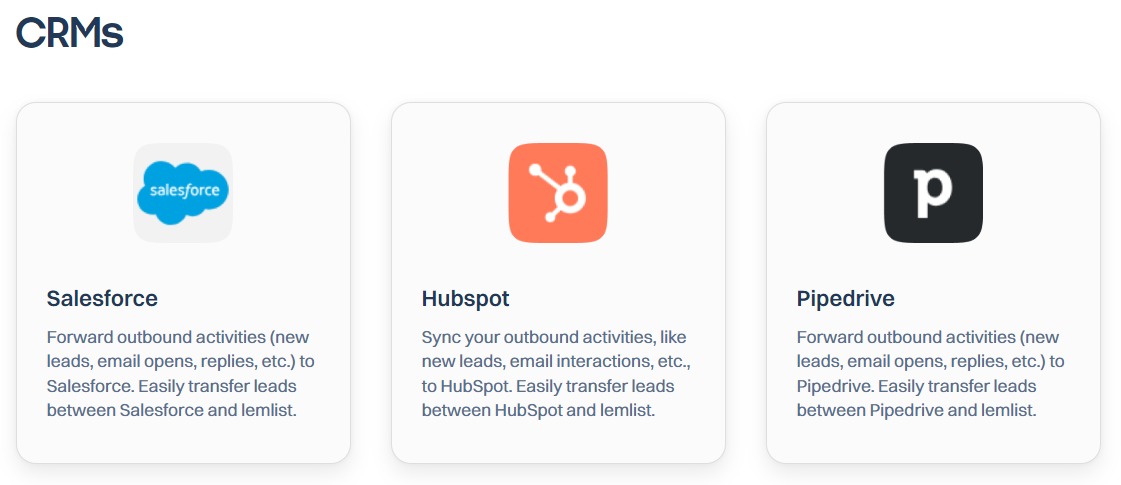
#44 Organize your campaigns
Use lemlist labels for clearer insights and focused reports.
Label campaigns by clients or objectives for better tracking.
#45 Keep trying!

Key takeaways
Big ups! If you’ve made it this far, it means you’re one persistent cold email player.
I sincerely hope these cold email tips brought you pure value.
Here’s another checklist that will bring fire to your outbound campaigns!
➡️Cold email mistakes to avoid if you want more replies
P.S. Make sure you spread the word. ❤️

